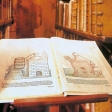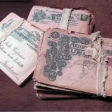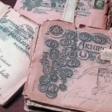Venetian Fugassa
In a bowl, combine flour and beer yeast, adding a couple of spoons of lukewarm water. Knead thoroughly and cover the bowl with a cloth and reserve to rise for a couple of hours in warm place. Then, add as much flour and water as the first time, knead thoroughly one more time and reserve to rise for 2 more hours. Repeat this session four more times, with a time gap of 2 hours every time. Instead of lukewarm water, add the wisked eggs and egg yolks, sugar and butter according to how much flour you're adding: you should everytime be able to have a dough to knead.
Add a pinch of salt, some kirsch, orange zest (sliced thinly), cloves and iris powder, a pinch of cinnamon and vanilla, the Grappa. Knead thoroughly until the dough is elastic, place it in a baking tray (a dove-shaped one would be even better). Wet the surface with some egg white, sprinkle some sanding sugar and broken almonds, bake in the oven at medium heat untile the fugassa rises and get a golden/brownish crust.
Recommended Grappa:
PO' di Poli Secca
Link to the recipe:
http://www.saperesapori.it/Tradizioniestagioni/Archivio/tabid/287/articleType/ArticleView/articleId/1409/La-Fugassa-Veneta.aspx#.VORRA_mG_-V
- Ingredients:
450 g flour
125 g butter
125 g sugar
20 g beer yeast
40 g almonds
5 eggs
Venetian flavourings (kirsch, orange zest, cinnamon, vanilla, cloves powder, iris powder)
1 shot glass Grappa
Salt
Sanding sugar - Author:
- Laura Corte
- Typology:
- Dessert
- Preparation time:
- 60 minutes
- Notes:
- “focaccia” is the most traditional pastry baked for Easter in Veneto. This dish can be also shaped into a dove, using the same dough. This pastry dates back to very ancient times: it was baked to celebrate Christ’s resurrection. Although the origin of this cake is not clear, it seems that this “sweet bread” was first baked by a man in Treviso: he used to mix some eggs, butter and honey (sometimes almonds too) into the dough, and offer the cake to his customers or Easter. The “fugassa” was also a typical gift made by a wannabe-bridegroom to the family of the future bride during the engagement party: a wedding ring was then hidden in the dough.















